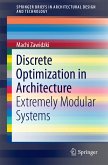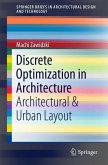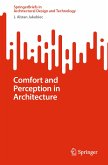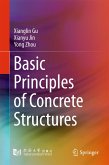This book explores the extremely modular systems that meet two criteria: they allow the creation of structurally sound free-form structures, and they are comprised of as few types of modules as possible. Divided into two parts, it presents Pipe-Z (PZ) and Truss-Z (TZ) systems. PZ is more fundamental and forms spatial mathematical knots by assembling one type of unit (PZM). The shape of PZ is controlled by relative twists of a sequence of congruent PZMs. TZ is a skeletal system for creating free-form pedestrian ramps and ramp networks among any number of terminals in space. TZ structures are composed of four variations of a single basic unit subjected to affine transformations (mirror reflection, rotation and combination of both).
Dieser Download kann aus rechtlichen Gründen nur mit Rechnungsadresse in A, B, BG, CY, CZ, D, DK, EW, E, FIN, F, GR, HR, H, IRL, I, LT, L, LR, M, NL, PL, P, R, S, SLO, SK ausgeliefert werden.









